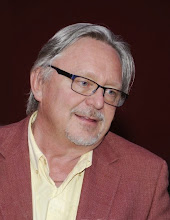In my 2007 post Changing The Habits of a Lifetime I presented an analysis of how the brain rations its conscious processing power in controlling physical processes. Whether or not anyone would understand or agree with that explanation, the important point is to appreciate the extent to which the brain tries to assign physical activity to unconscious processing. In effect, the brain wants to develop habits to drive our use of our body.
I went on to suggest my infamous "4 bullet points explanation" of how the Alexander Technique addresses inappropriate habits:
- identify wrong subconscious habits (misuse)
- inhibit the impulses that drive them
- substitute different, consciously controlled (directed) means of using the body
- repeat until the new use replaces the old habits
Just what is "inhibition"? Type define: inhibition into Google and you will see a variety of dictionary definitions. In AT, we use it in a particular way as defined by Mr. Alexander.
Inhibition is a psycho-physical process that is applied to prevent an undue response to a stimulus. For example, I may ask a pupil to sit in the chair and I want him to inhibit his response. I want him to say "no" to the stimulus. He is saying no to the force of habit - the subconcious habitual way of sitting. I want him to substitute a constructive, consciously controlled means of sitting in the chair. As he does this, I guide him with my hands. What he experiences may not feel right to him. Hopefully he won't be stiffening his neck and pulling his head back. He will release his hips and direct himself up.
If he repeats this process enough times both in lessons and, more importantly, in his day to day life, eventually the newly directed means of sitting in the chair will become his new habit.
So, returning to the starting position, what is the point at which the inhibition - the saying no - is applied? Think of an actor jumping off the stage. Where was she when she jumped? On the stage? No, that was before she jumped. In the air? No, that was after she jumped. When was my pupil supposed to be applying inhibition? (Marjorie Barlow would say "How far back do you want to go?") Can he say no to a stimulus before the stimulus is received? Saying no after the stimulus has been recognised is actually too late. His brain has already instantly prepared itself to respond habitually.
This is a bit of a conundrum!
To try to answer this question let's consider for a moment that scientific experimentation has shown that we have actually taken actions several milliseconds before we are aware that we have done so! This is not science fiction. What this means is that our response to a stimulus has already been chosen before we are aware that we have been stimulated. If we are to inhibit our response, and substitute a different one then we are going to have to apply inhibition prior to what we perceive as the present moment! Oh dear, this is beginning to sound a bit esoteric.
In practice, it means that inhibition has to be applied on a subconscious level in order for it to be able to "get ahead of" our conscious awareness. Maybe this is one of the reasons why so many people don't really grasp the subtlety of the Technique.
So how can we develop our ability to inhibit? We start by actually saying no to stimuli as we recognise them. We accept, for the time being, that this isn't actually inhibition in its true sense. We repeat this process - both inside lessons, where the teacher's stimuli are discrete and obvious, and outside lessons where all sorts of stimuli are constantly bombarding us. Eventually, with enough repetition, inhibition will become a habit. Only at this point will it actually have the desired effect in preventing subconscious bad habits. Is this beginning to sound familiar? It's the four bullet points used recursively to define the second one.
Inhibition eventually becomes a state of mind, an attitude if you like. It manifests itself in the practitioner as a state of calmness and confidence; an un-flapability. This is because we are all stressed and excited by the constant bombardment of stimuli in our day to day lives. In inhibition, we now have a mechanism for switching off our unthinking responses. Mr. Alexander spoke of this back is the early part of the 20th century so you can appreciate how the problem has expanded exponentially up to the modern day!
It takes time, understanding and persistence to develop inhibition. I believe that, throughout your life, if you continue to apply what you have been taught in your AT lessons, you will continue to develop a deeper understanding of the use of the self through the application of inhibition and that will bring you untold satisfaction and enjoyment. It has for me.
